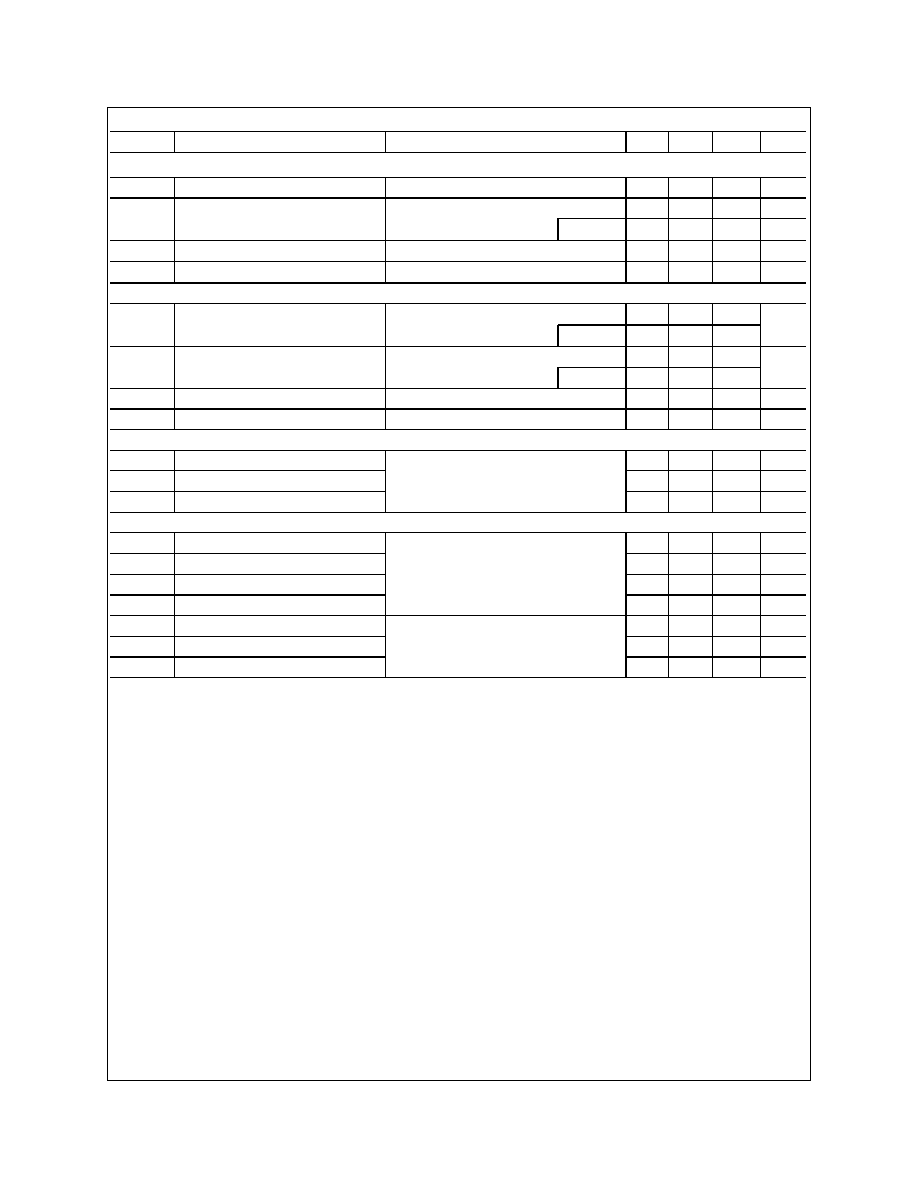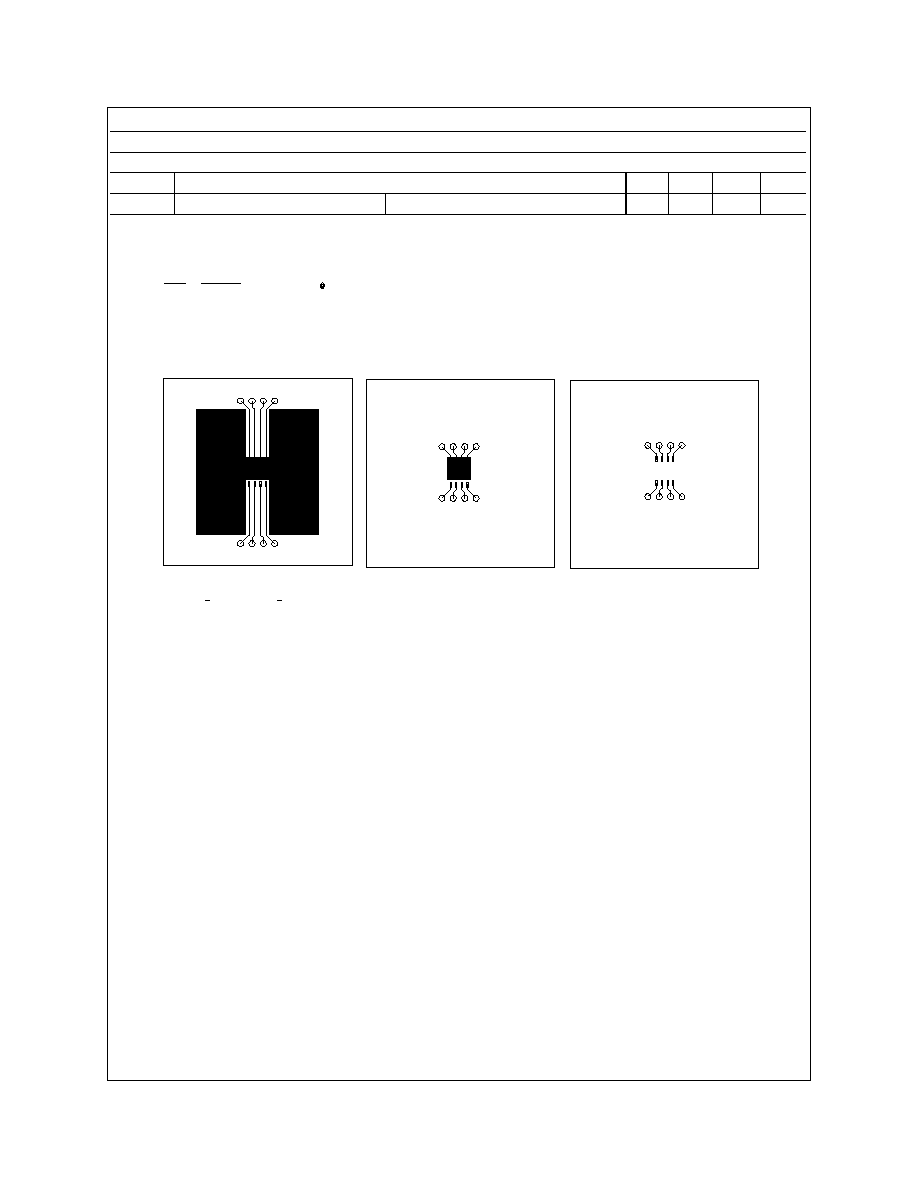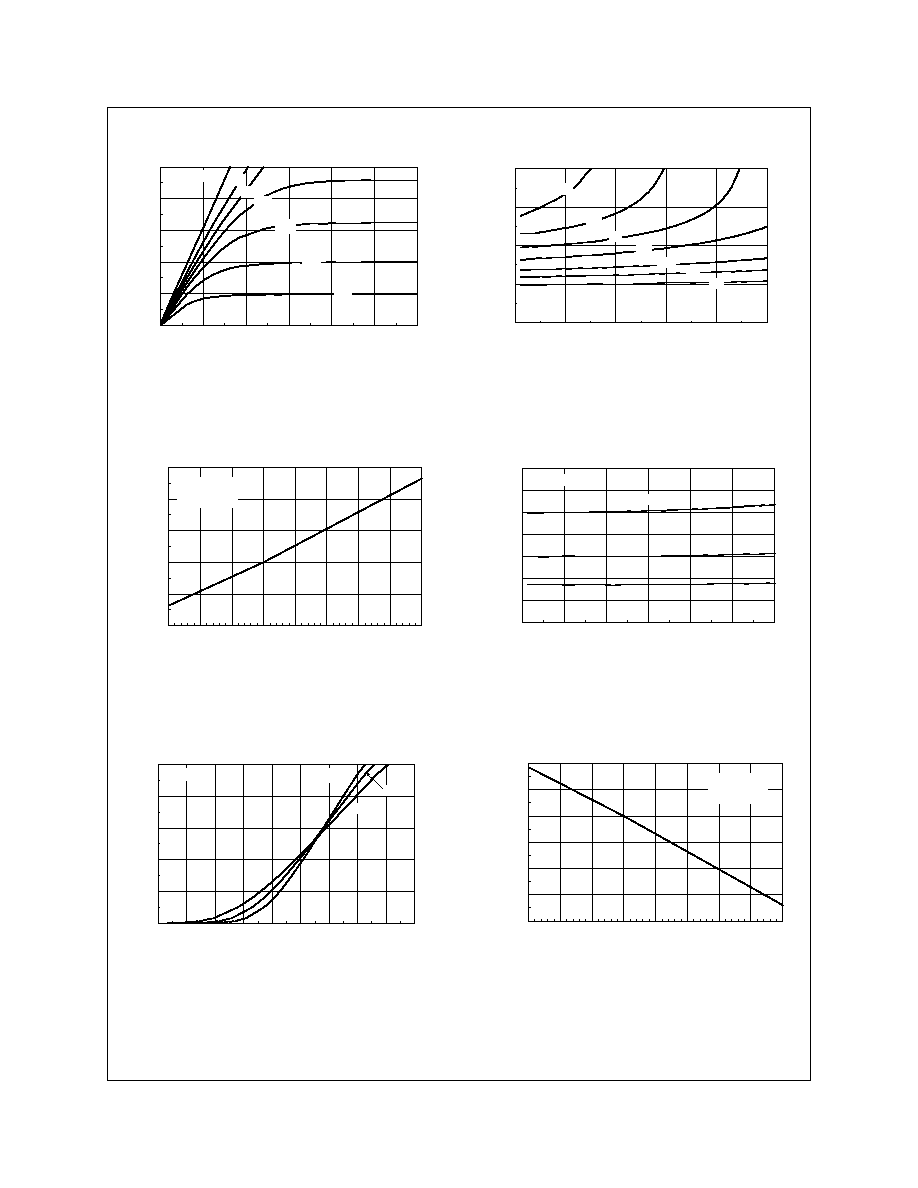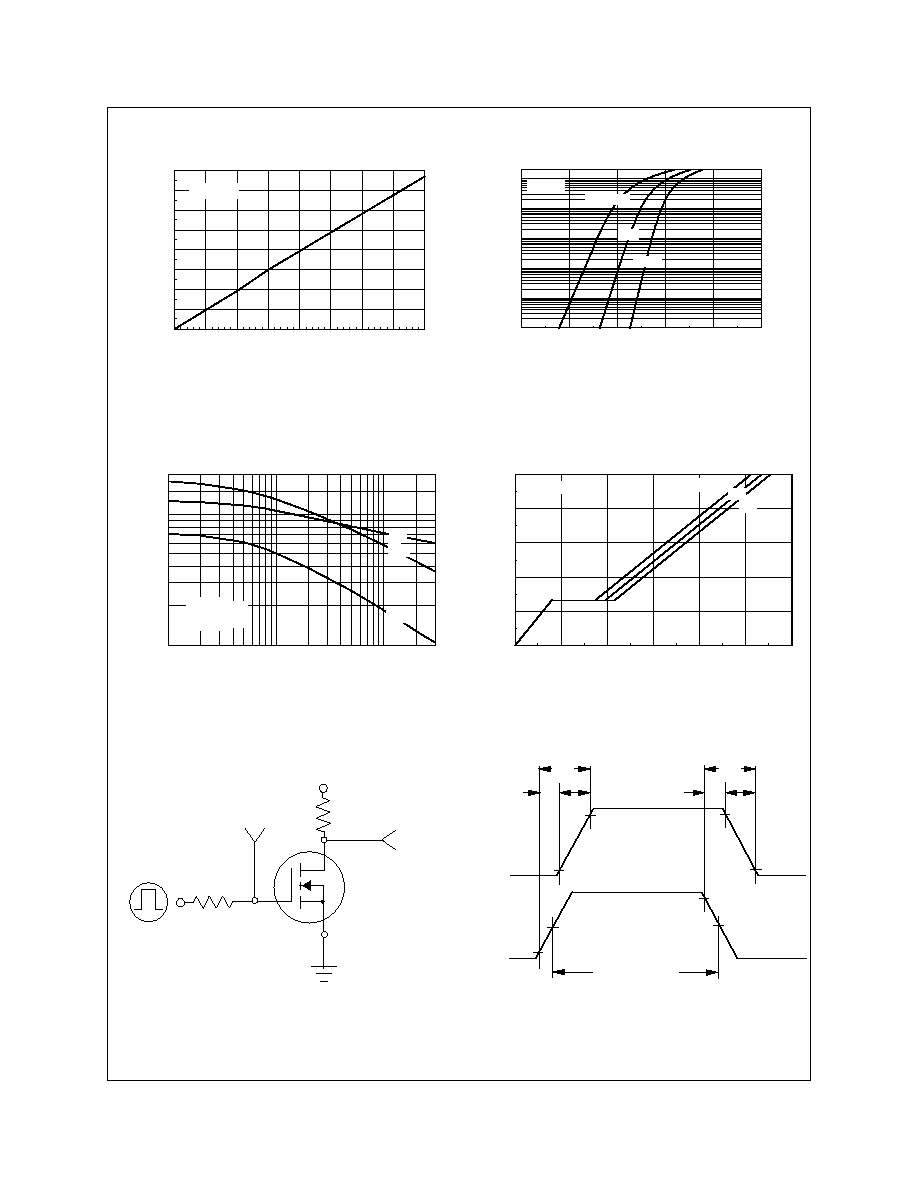 | –≠–ª–µ–∫—Ç—Ä–æ–Ω–Ω—ã–π –∫–æ–º–ø–æ–Ω–µ–Ω—Ç: NDS9410S | –°–∫–∞—á–∞—Ç—å:  PDF PDF  ZIP ZIP |

February 1997
NDS9410S
Single N-Channel Enhancement Mode Field Effect Transistor
General Description
Features
____________________________________________________________________________________________
ABSOLUTE MAXIMUM RATINGS
T
A
= 25∞C unless otherwise noted
Symbol
Parameter
NDS9410S
Units
V
DSS
Drain-Source Voltage
30
V
V
GSS
Gate-Source Voltage
±20
V
I
D
Drain Current - Continuous
(Note 1a)
7
A
- Pulsed
25
P
D
Maximum Power Dissipation
(Note 1a)
2.5
W
(Note 1b)
1.2
(Note 1c)
1
T
J
,T
STG
Operating and Storage Temperature Range
-55 to 150
∞C
THERMAL CHARACTERISTICS
R
JA
Thermal Resistance, Junction-to-Ambient
(Note 1a)
50
∞C/W
R
JC
Thermal Resistance, Junction-to-Case
(Note 1)
25
∞C/W
NDS9410S Rev.B
SO-8 N-Channel enhancement mode power field effect
transistors are produced using Fairchild's proprietary, high cell
density, DMOS technology. This very high density process is
especially tailored to minimize on-state resistance and provide
superior switching performance. These devices are particularly
suited for low voltage applications such as notebook computer
power management and other battery powered circuits where
fast switching, low in-line power loss, and resistance to
transients are needed.
7.0 A, 30 V. R
DS(ON)
= 0.03
@ V
GS
= 10 V.
High density cell design for extremely low R
DS(ON)
.
High power and current handling capability in a widely used
surface mount package.
1
5
6
7
8
4
3
2
© 1997 Fairchild Semiconductor Corporation

ELECTRICAL CHARACTERISTICS
(T
A
= 25∞C unless otherwise noted)
Symbol
Parameter
Conditions
Min
Typ
Max
Units
OFF CHARACTERISTICS
BV
DSS
Drain-Source Breakdown Voltage
V
GS
= 0 V, I
D
= 250 µA
30
V
I
DSS
Zero Gate Voltage Drain Current
V
DS
= 24 V, V
GS
= 0 V
1
µA
T
J
= 55∞C
10
µA
I
GSSF
Gate - Body Leakage, Forward
V
GS
= 20 V, V
DS
= 0 V
100
nA
I
GSSR
Gate - Body Leakage, Reverse
V
GS
= -20 V, V
DS
= 0 V
-100
nA
ON CHARACTERISTICS
(Note 2)
V
GS(th)
Gate Threshold Voltage
V
DS
= V
GS
, I
D
= 250 µA
2
2.2
4
V
T
J
= 125∞C
1.4
1.6
2.8
R
DS(ON)
Static Drain-Source On-Resistance
V
GS
= 10 V, I
D
= 7 A
0.026
0.03
T
J
= 125∞C
0.036
0.055
I
D(on)
On-State Drain Current
V
GS
= 10 V, V
DS
= 5 V
25
g
FS
Forward Transconductance
V
DS
= 10 V, I
D
= 7 A
11
S
DYNAMIC CHARACTERISTICS
C
iss
Input Capacitance
V
DS
= 15 V, V
GS
= 0 V,
f = 1.0 MHz
670
pF
C
oss
Output Capacitance
490
pF
C
rss
Reverse Transfer Capacitance
150
pF
SWITCHING CHARACTERISTICS
(Note 2)
t
D(on)
Turn - On Delay Time
V
DD
= 10 V, I
D
= 1 A,
V
GEN
= 10 V, R
GEN
= 6
10
20
ns
t
r
Turn - On Rise Time
15
30
ns
t
D(off)
Turn - Off Delay Time
19
40
ns
t
f
Turn - Off Fall Time
12
25
ns
Q
g
Total Gate Charge
V
DS
= 10 V,
I
D
= 7 A, V
GS
= 10 V
18
25
nC
Q
gs
Gate-Source Charge
4
nC
Q
gd
Gate-Drain Charge
6
nC
NDS9410S Rev.B

ELECTRICAL CHARACTERISTICS
(T
A
= 25∞C unless otherwise noted)
Symbol
Parameter
Conditions
Min
Typ
Max
Units
DRAIN-SOURCE DIODE CHARACTERISTICS AND MAXIMUM RATINGS
I
S
Maximum Continuous Drain-Source Diode Forward Current
2.1
A
V
SD
Drain-Source Diode Forward Voltage
V
GS
= 0 V, I
S
= 2.1A
(Note 2)
1.2
V
Notes:
1. R
JA
is the sum of the junction-to-case and case-to-ambient thermal resistance where the case thermal reference is defined as the solder mounting surface of the drain pins. R
JC
is guaranteed by
design while R
CA
is determined by the user's board design.
Typical R
JA
for single device operation using the board layouts shown below on 4.5"x5" FR-4 PCB in a still air environment:
a. 50
o
C/W when mounted on a 1 in
2
pad of 2oz copper.
b. 105
o
C/W when mounted on a 0.04 in
2
pad of 2oz copper.
c. 125
o
C/W when mounted on a 0.006 in
2
pad of 2oz copper.
Scale 1 : 1 on letter size paper
2. Pulse Test: Pulse Width < 300µs, Duty Cycle < 2.0%
NDS9410S Rev.B
1a
1b
1c
P
D
(
t
) =
T
J
-
T
A
R
J A
(
t
)
=
T
J
-
T
A
R
J C
+
R
CA
(
t
)
=
I
D
2
(
t
) ◊
R
DS
(
ON
)
T
J

NDS9410S Rev.B
0
0.5
1
1.5
2
2.5
3
0
6
12
18
24
30
V , DRAIN-SOURCE VOLTAGE (V)
I , DRAIN-SOURCE CURRENT (A)
5.0
4.5
V =10V
GS
DS
D
4.0
5.5
7.0
6.0
0
6
12
18
24
30
0.5
1
1.5
2
2.5
I , DRAIN CURRENT (A)
DRAIN-SOURCE ON-RESISTANCE
D
V =4.5V
GS
8.0
5.0
5.5
6.0
7.0
1 0
R , NORMALIZED
DS(on)
Typical Electrical Characteristics
-50
-25
0
2 5
5 0
7 5
1 0 0
1 2 5
1 5 0
0.6
0.8
1
1.2
1.4
1.6
T , JUNCTION TEMPERATURE (∞C)
DRAIN-SOURCE ON-RESISTANCE (OHMS)
J
R , NORMALIZED
DS(ON)
V = 10V
GS
I = 7.0A
D
0
5
10
15
20
25
30
0.4
0.6
0.8
1
1.2
1.4
1.6
1.8
I , DRAIN CURRENT (A)
DRAIN-SOURCE ON-RESISTANCE
D
V = 10V
GS
T = 125∞C
J
25∞C
-55∞C
R , NORMALIZED
DS(on)
2
2.5
3
3.5
4
4.5
5
5.5
6
6.5
0
6
1 2
1 8
2 4
3 0
V , GATE TO SOURCE VOLTAGE (V)
I , DRAIN CURRENT (A)
V = 10V
DS
GS
D
T = -55∞C
J
25∞C
-125∞C
-50
-25
0
25
50
75
100
125
150
0.6
0.7
0.8
0.9
1
1.1
1.2
T , JUNCTION TEMPERATURE (∞C)
GATE-SOURCE THRESHOLD VOLTAGE
J
V , NORMALIZED
GS(th)
I = 250µA
D
V = V
GS
DS
Figure 6. Gate Threshold Variation
with Temperature
.
Figure 1. On-Region Characteristics
.
Figure 2. On-Resistance Variation
with Drain Current and Gate Voltage
.
Figure 3. On-Resistance Variation
with Temperature.
Figure 4. On-Resistance Variation
with Drain Current and Temperature
.
Figure 5. Transfer Charateristics
.

NDS9410S Rev.B
-50
-25
0
2 5
5 0
7 5
1 0 0
1 2 5
1 5 0
0.94
0.96
0.98
1
1.02
1.04
1.06
1.08
1.1
T , JUNCTION TEMPERATURE (∞C)
DRAIN-SOURCE BREAKDOWN VOLTAGE
I = 250µA
D
J
BV , NORMALIZED
DSS
0
0.3
0.6
0.9
1.2
1.5
0.0001
0.001
0.01
0.1
1
5
10
20
V , BODY DIODE FORWARD VOLTAGE (V)
I , REVERSE DRAIN CURRENT (A)
T = 125∞C
J
25∞C
-55∞C
V = 0V
GS
SD
S
Figure 7. Breakdown Voltage
Variation with Temperature
.
Figure 8. Body Diode Forward Voltage Variation
with Source Current and
Temperature
.
Typical Electrical Characteristics
(continued)
0
5
1 0
1 5
2 0
2 5
3 0
0
3
6
9
1 2
1 5
Q , GATE CHARGE (nC)
V , GATE-SOURCE VOLTAGE (V)
g
GS
V = 5V
DS
10V
15V
I = 7.0A
D
0.1
0.2
0.5
1
2
5
1 0
2 0
3 0
1 0 0
3 0 0
5 0 0
1 0 0 0
1 5 0 0
2 0 0 0
VDS (V)
CAPACITANCE (pF)
C
iss
f = 1 MHz
V = 0 V
GS
C
oss
C
rss
G
D
S
V
DD
R
L
V
V
IN
OUT
V
GS
DUT
R
GEN
10%
50%
90%
10%
90%
90%
50%
V
IN
V
OUT
o n
off
d(off)
f
r
d(on)
t
t
t
t
t
t
INVERTED
10%
PULSE WIDTH
Figure 9. Capacitance Characteristics
.
Figure 10. Gate Charge Characteristics
.
Figure 11. Switching Test Circuit
.
Figure 12. Switching Waveforms
.




